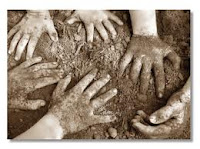 Pica is a relatively rare and commonly misunderstood disorder in which individuals persistently crave – and feel compelled to eat – non-food items such as glue, leaves, or soil. The substances upon which pica-afflicted individual focus their attention tend to vary depending upon the age of the patient – for example, children may be drawn toward sand, gravel, glue, or animal droppings, while adult sufferers may become fixated on eating substances such as laundry detergent, soil, and clay.
Pica is a relatively rare and commonly misunderstood disorder in which individuals persistently crave – and feel compelled to eat – non-food items such as glue, leaves, or soil. The substances upon which pica-afflicted individual focus their attention tend to vary depending upon the age of the patient – for example, children may be drawn toward sand, gravel, glue, or animal droppings, while adult sufferers may become fixated on eating substances such as laundry detergent, soil, and clay. Pica can affect individuals of all ages and both genders, but the disorder is most commonly found in young children and pregnant women.
Sometimes the behaviour is linked to certain mineral deficiencies, such as iron or zinc, which the body craves from other sources. The disorder is also linked to people who have psychiatric disturbances such as hysteria, people with developmental disabilities or similar impairments, people whose family or ethnic customs include eating certain non-food substances, families with a history of this behaviour, people who live in atmospheres of little support and love or who come from a poor family, and people who diet, become hungry and then try to disregard their appetite by eating low-calorie and non-food substances.
Symptoms of Pica
The primary indication that a person is suffering from pica is that that person feels an urge to eat non-food items.Causes of Pica
As with all types of eating disorders, experts have been unable to identify a direct cause of pica – though (as is also the case with other related disorders) it is believed to result from a range of internal and external factors.The following influences have been associated with a greater likelihood that a person will exhibit symptoms of pica: neglect or lack of parental supervision during early childhood, emotional deprivation, anemia, developmental delays, and poverty.
Treatment of Pica
Therapy is the primary mode of treatment for pica patients. By addressing emotional disorders that may have caused, exacerbated, or been made worse by a patient’s pica, therapists can help to alleviate related pressures and prevent the development of additional conditions. Depending upon the nature and severity of the condition, a patient’s progress may be enhanced by individual, group, family, or marital counseling.


Tidak ada komentar:
Posting Komentar